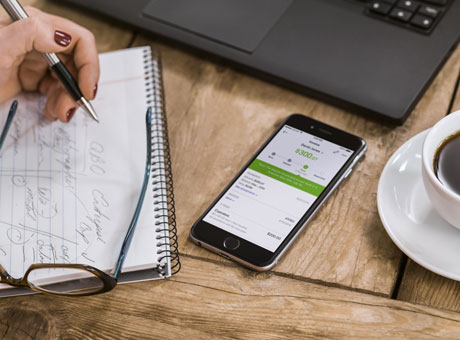As a small business owner, you should know the true cost of each product you make or service you offer. Knowing this cost helps you determine how much to charge your customers or clients. And accurate pricing lets you enjoy a healthy profit margin and keep your business growing.

How to Perform Cost Assignment
What Is Cost Assignment?
The most effective way to discover your true costs is through cost assignment. With the cost assignment method, you factor both direct and indirect costs into the total cost of your specific product or service. Your individual product or service is called a cost object. A key to successfully assigning costs is defining the cost drivers of the cost object.
What Are Cost Drivers?
Cost drivers are variable elements that make up the cost of producing your cost object. They’re important when you’re doing cost accounting and cost assignment for your internal reporting because cost drivers have a direct impact on the total cost of your item or service. Any product-related expenses you incur for your cost object can be cost drivers for assigning costs.
For example, say you’re calculating the cost of producing a dress. Your cost drivers for this cost object could include:
- The rent for the manufacturing facility
- The cost of the electricity you need for running the sewing machine
- The cost of the dress fabric
- The cost of the thread, decorative sleeve buttons and zipper
- The cost of employing the person who sews the garment
You make calculations more accurately when you use as many cost drivers as possible.
How Does Cost Assignment Work?
To perform cost assignment effectively, you must consider as many expenses associated with each item you produce as you can. You should incorporate more than just the supplies you need for making the product. For accuracy’s sake, it’s best to incorporate numerous cost drivers, including overhead costs such as rent and utilities.
For example, say you’re manufacturing and selling different types of backpacks. The cost of materials for each backpack doesn’t tell you much about the total cost. Why not? Because it doesn’t factor in the costs of labour and other factors that go into the manufacture of the backpacks, from designing the backpacks to shipping them to your retail store.
When calculating the cost of each backpack, if you only count your manufacturing expenses, you may end up with an inaccurate assignment of costs. That means your selling price wouldn’t reflect the true cost of the backpack, with a possible result of little or no profit on each sale.
Small Business Enterprise Assignment Sample
If you want to make use of cost assignment for a product, you can follow a simple process.
- Make as comprehensive a list as possible of all your cost drivers, meaning all the expenses incurred in the manufacture and sale of the product
- Determine what percentage of each expense went into creating the product.
- Multiply each expense by its percentage.
- Total the results.
Going back to your backpack manufacturing company, you want to know how much it costs to make your artisan-crafted backpack. This speciality item is growing in popularity, and you want to set a new price for it.
First, gather as many cost drivers as is practical. Your cost drivers for producing this speciality backpack might include the cost of:
- Materials
- Labour
- Utilities
- Equipment
- Shipping
You spend $5 on materials per backpack and pay your gifted backpack maker $30 an hour. Your utilities cost per day is $30, the equipment cost you $500, and your shipper charges $2 per item. Now you need to figure out what percentage of each expense goes into creating one of the backpacks.
You know the material costs are $5 each, and it takes the artisan one hour to make a backpack, so you allocate 100% of materials and labour to the backpack. That’s $35 so far. Shipping is $2 per item, so allocate 100%, which brings your total to $37.
Next, you assign amounts for your utilities and equipment costs and add them to the $37 in labour, materials and shipping costs.
So far your cost equation looks like this:
- $5 + $30 + $2 = $37
But you aren’t done yet, because you haven’t considered any of your indirect costs. If producing one of your backpacks takes 1% of your $30 daily utilities cost and 1% of your $500 equipment cost, that’s $5.30. So you assign $5.30 in costs to those items and add that figure to the $37, giving you $42.30. So your total assigned cost to produce one artisan-crafted backpack is $42.30. Your equation incorporating your indirect costs looks like this:
- $42 + ($30/100) + ($500/100) = $42.30
Now you’re in a position to determine how much profit you want. If you want to make a $20 profit, you can add that to your cost of $42.30. That sets the price you charge for your backpack at $62.30 or higher. But notice, you didn’t include other possible cost drivers, such as rent, taxes, and advertising costs. Those costs are likely to increase your total assigned cost for the backpack or cut into your $20 profit.
The Pros and Cons of Cost Assignment
When you’re making production and pricing decisions in your business, it’s crucial to get as close as possible to the true cost of your items. Performing cost allocation and assignment provides valuable data, but you should be aware of the benefits and drawbacks of the process so you can make an informed choice.
Pros of Assigning Costs
Cost assignment can help you find inefficiencies in how you’re producing your merchandise and give you valuable information for setting accurate prices. If you think it costs less to make your product than it really does, you might charge too low a price. Not charging enough leaves you with low profit or costs you money, because your price doesn’t cover your true costs.
Assigning costs enables you to determine which items you produce most efficiently and which earn you the most profit. That’s useful data for understanding how you should spend your resources. You might decide to produce more of your company’s biggest moneymakers and scale back or drop products with narrow margins.
You don’t have to limit yourself by using the cost assignment process only for producing items. It works with a variety of cost objects, such as:
- Services you provide
- Departments in your company
- Regions your sales force covers
- Clients your business or practice serves
For example, you could use cost assignment to figure out what serving a particular client costs compared to the income you receive from the client. That way, you could determine whether should raise your rates and charge that client more.
Cons of Assigning Costs
The main challenges with cost assignment are the time it takes and the complexity involved in getting accurate calculations. Even though more cost drivers make your calculations better, they add more work to the equation. And any changes in your business expenses or your product lineup means adjusting your cost assignment calculations.
Do you want the best of both worlds? Consider using the cost assignment method of pricing, but only use the drivers that make the biggest impact on your product’s total cost. That way, you still get calculations with reasonable accuracy, but you don’t spend too much time crunching the numbers.
It’s hard to beat cost assignment for pricing accuracy. Implementing this process at your business should boost your ability to know exactly how much you’re spending on every product you make.
Calculating internal reports using cost assignment may bring you higher profits. When it does, you should ensure you know exactly where that extra money goes. Keep your books accurate and up to date automatically. Change the way you manage your finances now.

